Being the #1 search engine by FAR in 2024, many want to rank higher on Google. However, it’s not an easy fit, as the competition is usually fierce, requiring top-notch optimization. Google is like a library of web pages and domains.
When you type in a search query, it’ll first deliver the best-optimized and well-written pages to tackle your interest. Its algorithm usually considers optimization, quality, and usefulness of the page, ranking higher those pages that fulfill these criteria.
In today’s guide, we’ll go through all the steps that explain how to rank higher on Google in 2024. Thus, if you’re struggling to rank a site on Google and you’re hell-bent on bettering your SEO specifically for this search engine, this guide is for none other than you.

How to Rank Higher on Google: 12 Tested Methods
Thanks to our numerous SEO experts on the team, we’ve been able to craft the list below.
All the methods we’ll discuss are tested personally, ensuring they work as intended. Although Google’s algorithm changes from time to time, the basics remain the same.
That said, to rank higher on Google, you should follow our helpful tips below.
1. Improve On-Page SEO
Improving your on-site or on-page SEO is vital when looking to rank a site higher on Google.
It’ll help you accentuate your page and make it rank higher in SERPs through quality SEO optimization. Now, when talking about on-page SEO, there are quite a few things.
One of them is focusing on structuring your article using H1-H6 titles – even Google directly recommends doing this.
Another thing is to ensure the keyword appears in your H1 title, meta description, and SEO title.
Also, ensure that the targeted keyword appears at the very start of your article, page, or blog post. When discussing your meta description, it should sound attractive and compelling. Someone who sees it must be enticed to open the page and see what’s on it.
You can use Semrush On-Page SEO Checker for this purpose. It’ll let you improve each page individually and apply necessary optimization.
For instance, it’ll inform you to optimize your images by including a proper filename and alt text, as well as applying compression.
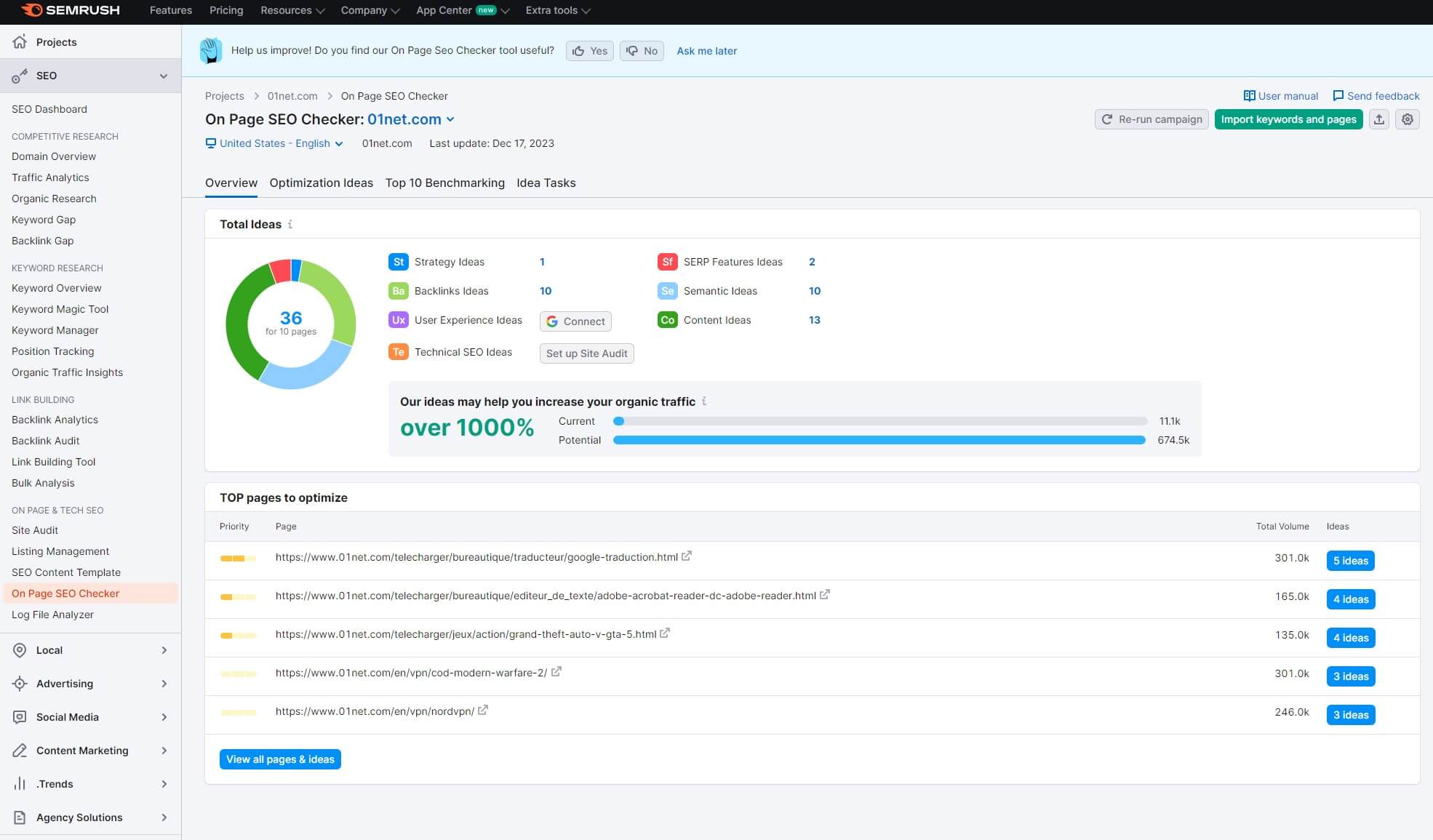
This is vital to ensure the images are loading faster, which simultaneously improves the website performance. More about that. The final thing regarding improving on-page SEO is content length. This depends on the topic you’re covering.
However, Google appreciates long-form content that covers the topic without keyword stuffing. That said, if you want to rank higher on Google, consider expanding the article and adding relevant information that would propel you to the first page in SERPs.
Improve On-Site SEO With Semrush
2. Understand the Subject You’re Covering Fully
Covering the topic fully is one of the most vital things you can do if being ranked on Google is a priority. This can be pretty complex, as you need to cover every nook and cranny, which usually means you have to dig deeper and perform a longer research.
Again, using Semrush will help you in many ways. For example, its Keyword Gap tool lets you see which keywords your competitors rank for but you don’t. This allows you to include the keyword or phrase and cover it more effectively.
Also, make sure to monitor your main competitors and see what their articles and pages are focusing on.
Subheadings and FAQs are important because they usually answer frequently asked questions.
To rank higher on Google, taking note of Search Intent is crucial.
Semrush is among the rare SEO software that displays this parameter. It tells you more about WHY users search for a particular keyword. Search intent can be informational, commercial, navigational, or transactional.
Some keywords rank better in blog posts rather than sales-oriented pages. A good example is the “air fryer” keyword. You’d think implementing its sale-focused keyword would rank you higher on Google, but no.
This keyword’s top-ranking results are BLOG POSTS – believe it or not. It tells Google that people want to get information about the product rather than buying it immediately. Thus, for this keyword, it’s better to focus on covering product-related information fully.
3. Perform Keyword Research
Keyword research is extremely important for ranking higher on Google or any other search engine.
Everything begins here. You need to find a keyword for which you’ll optimize your article, web page, blog post, or any other type of post.
However, the keyword alone means nothing without information like volume, difficulty, CPC, trends, and so forth. We think Semrush does a terrific job here by accurately displaying the aforementioned info. On top of that SE Ranking seems to be great too!
Research Keywords With SE Ranking
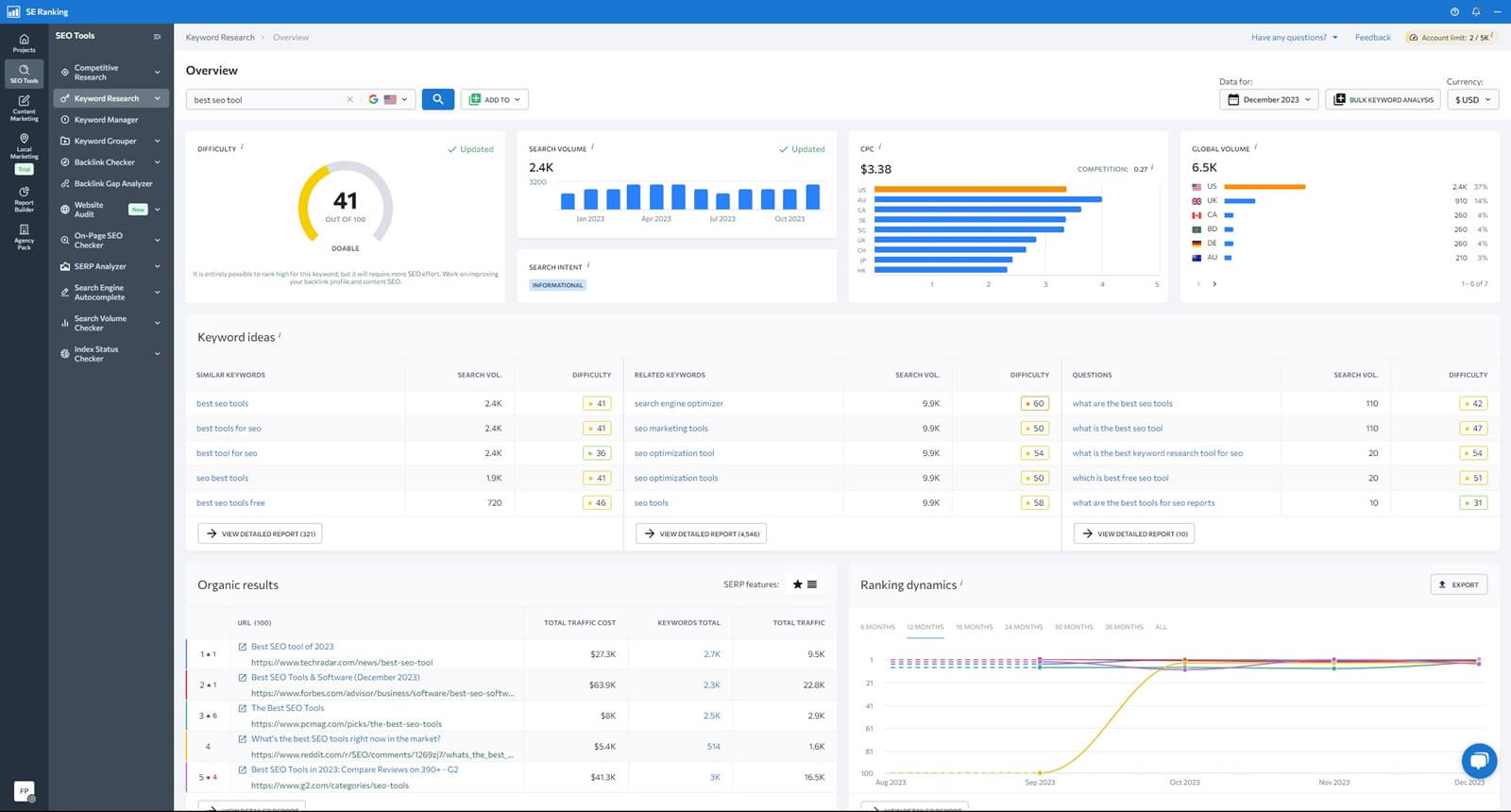
Tools like this will help you research each keyword deeply by typing in the keyword of your choice. You’ll get related keywords as well as new ideas in the form of related keywords and questions that you can implement in your article.
Especially important is keyword difficulty because it implies how hard it is to rank for that keyword.
Sometimes, it’s better to target lower-difficulty keywords to overtake “smaller” domains and then shoot your way to the top with higher-difficulty keywords.
Keyword volume is important to see how many people search for it. If the volume is low, the keyword might not be worth doing. Semrush’s ability to show trends is handy, letting you see how the keyword “behaves” over time – another factor we appreciate.
We recommend using Semrush’s Keyword Magic Tool specifically because it shows plenty of information, including search intent and keywords that mobile users search for. In-depth keyword research is a MUST, so take your time to perform it properly.
4. Improve Your Website Performance and Experience
Google appreciates websites that provide a silky-smooth experience and work well. Think about the highest-ranking sites in your niche. Most likely, they look and feel intuitive, with short loading times and snappiness that’s likely above yours.
Well, that’s because the owners of these sites know how to rank higher on Google by improving performance and experience. Your website performance is graded on many aspects, one of which is page loading.
Google will check the page and if it takes a century to load, it’ll just rank it lower in SERPs. You can improve this aspect by auditing your site using Site Audit in Semrush or SE Ranking. These tools will display your Site Health and highlight the issues that need fixing.
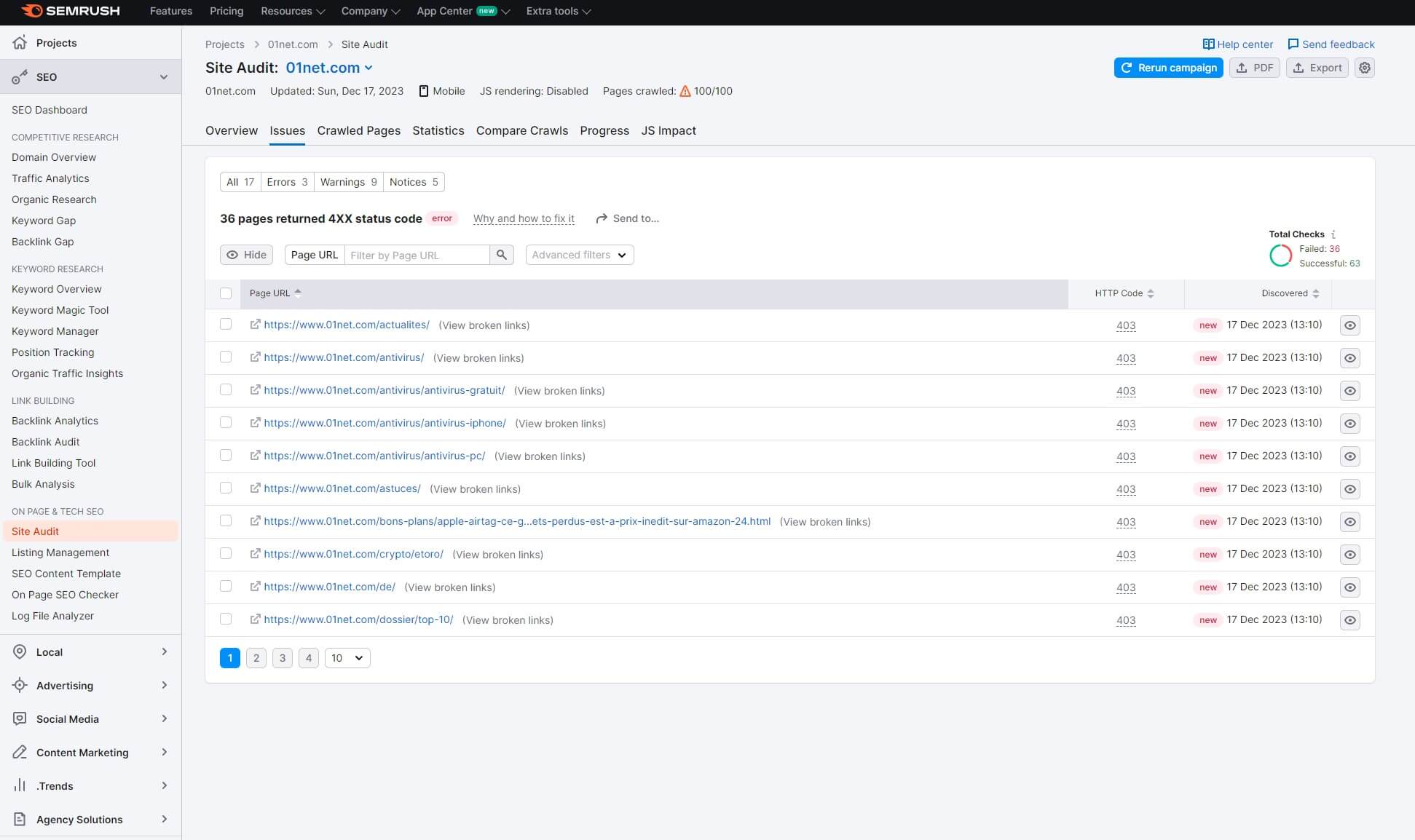
If it’s performance, they’ll explain how to improve it, which usually has to do with optimizing images/videos (using JPEG instead of PNG) and reducing the number of JS and CSS files on the page. To rank a site on Google, one can implement browser caching.
The cache of static elements will be kept on the user’s device so that the next time he/she visits the page, these elements will be loaded instantly. Page loading is crucial for reducing your bounce rate, especially if it takes more than 4-5 seconds to load.
These sites are often neglected by users who simply click off of them and look for another site instead. Google takes special care of bounce rate and harshly punishes websites whose bounce rate is higher.
Bonus Tip: Use a Faster Hosting Provider
In many cases, the site’s performance depends on the hosting provider. That’s why you shouldn’t skimp on it and get a better plan, with more CPU cores, RAM, and storage. You’ll find valuable plans on Hostinger, which is our favorite option in 2024.
It offers a wealth of web, cloud, and VPS hosting plans to suit your needs. One thing we haven’t touched upon that much is the user experience, which should be top-notch. The site should be intuitive, with easy-to-fetch information that users can grasp.
Having a proper SEO tool in conjunction with a fast and reliable hosting provider results in a higher website ranking on Google.
These two can help you achieve the desired look and performance, thus, improving Google ranking swiftly.
5. Focus on Website’s Mobile Optimization
When talking about the user experience and performance, we should briefly mention mobile optimization. Mobile devices are handy for going online, as they let you enjoy the internet fully on the fly. Honestly, most of us are living fast today, spending time away from home.
This leaves us with our phones and tablets, which we then use for watching YouTube or browsing the internet. Statistics show that people in the US spend more than 5 hours a day on their mobile devices and check their phones early 100 times!
It’s not strange that Google considers mobile optimization very important. If you’re wondering how to improve Google Search ranking, optimizing your website for mobile devices is a good starting point.
By that, we mean loading times, UI, proper font size, and so on. Look at some of the largest sites like Amazon or X, they’re both functioning super-well on mobile devices even outside of their dedicated apps. This goes to show how vital mobile optimization is.
6. Don’t Forget LSI Keywords
LSI stands for Latent Semantic Indexing.
But what the hell are LSI keywords? As the name implies, they are keywords and phrases related to the main keyword or topic in question, for instance. They help you better and more accurately describe what you’re talking about.
Semrush’s Keyword Magic Tool is great for this purpose. It’ll display keywords related to the analyzed keyword to help you better cover the topic.
It also offers the tool titled SEO Content Template to analyze your targeted keyword and provide suggestions.
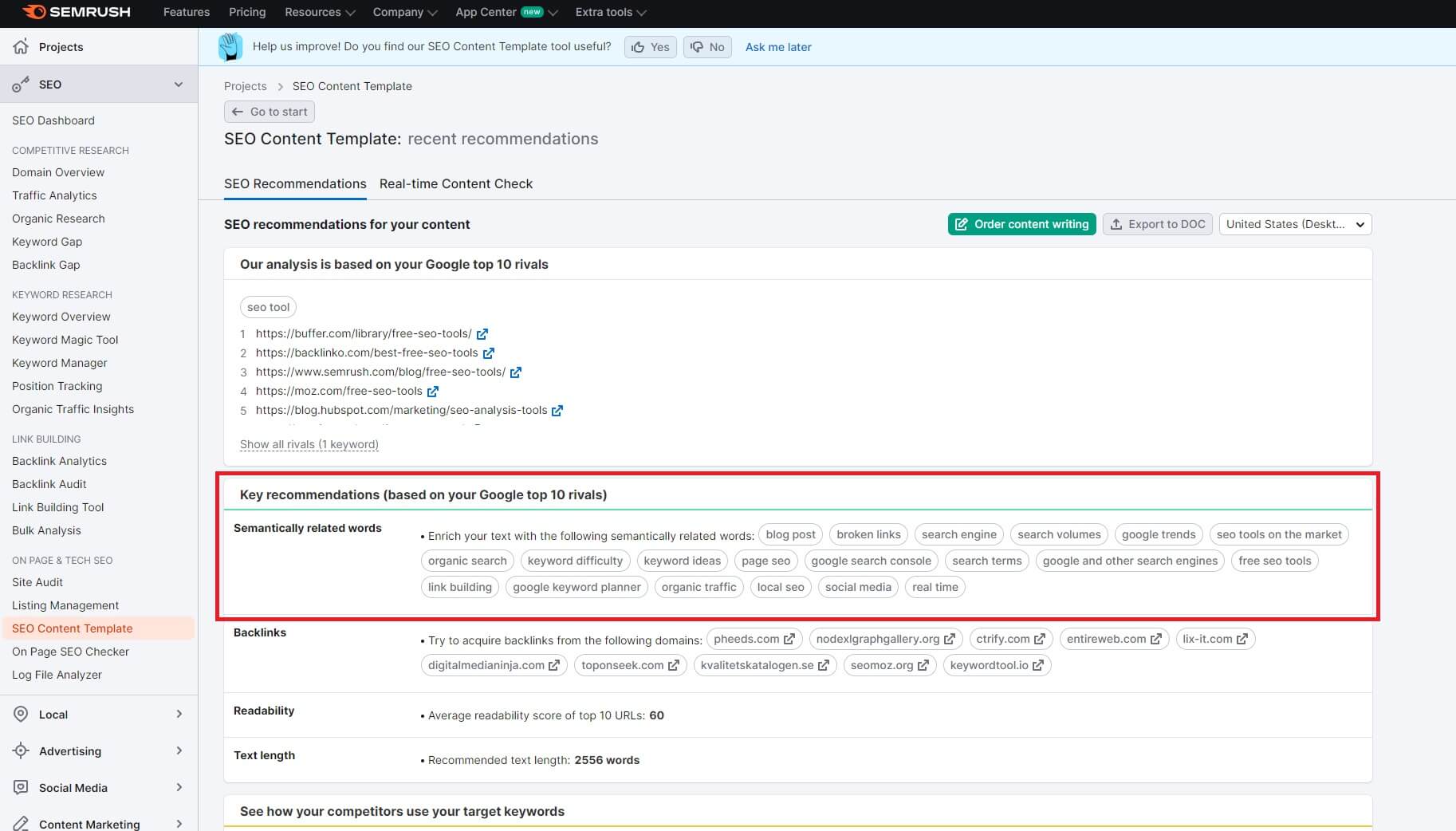
What’s more, there’s a specific section titled “Semantically related words” where dozens of LSI keywords can be found. These LSI keywords will improve your Google ranking dramatically because they help you get higher topical authority.
Let’s say the keyword is SEO. LSI keywords might include things like search engine, local SEO, social media, blog post, broken links, and many others. Google loves it when a single page covers an entire topic, as it makes understanding that topic easier.
Instead of wandering around from site to site, a user can open a single page and find out everything important about a topic. For this to be possible, proper use of LSI keywords will help a lot, along with proper topic understanding, which is mandatory.
7. Frequently Update Your Pages
To rank higher on Google, keeping your pages fresh and relevant is key. You can improve your Google ranking by updating old information from time to time.
To prove this is important, you can check the dates of pages that appear in SERPs.
Type in a request like “the best VPN services” and see what comes up. You’ll see that the top-ranking pages are updated very recently – even like 2-3 days ago! It’s not about updating the date of the page in WordPress, though.
You need to provide fresh and accurate information along with it. If an SEO tool you’re talking about includes a new tool, be sure to mention it. If there’s a price increase, mention it as well. Your content needs to be fresh and accurate to rank higher on Google.
Google will notice that you’re updating your pages and making them more relevant. This will tell the search engine that you’re still afloat and fighting to rank higher. As a result, your page will rank better in SERPs thanks and have more chances of attracting visitors.
8. Get Quality Backlinks
You’ll find the process of building backlinks extremely challenging. Simultaneously, Google’s search quality senior strategist Andrey Lipattsev confirmed that this is among the most important factors for ranking higher back in 2016.
The key thing about your backlink profile is that you can’t control it. Or can you? Well, to an extent. For example, Semrush offers an exceptional link-building tool. Here, you’ll enjoy a CRM-like experience and easily find new backlink opportunities.
Semrush will display the websites where you can ask for a backlink or guest post to build a healthy backlink profile. Better yet, it enables you to directly contact the owner of the website for such an arrangement.
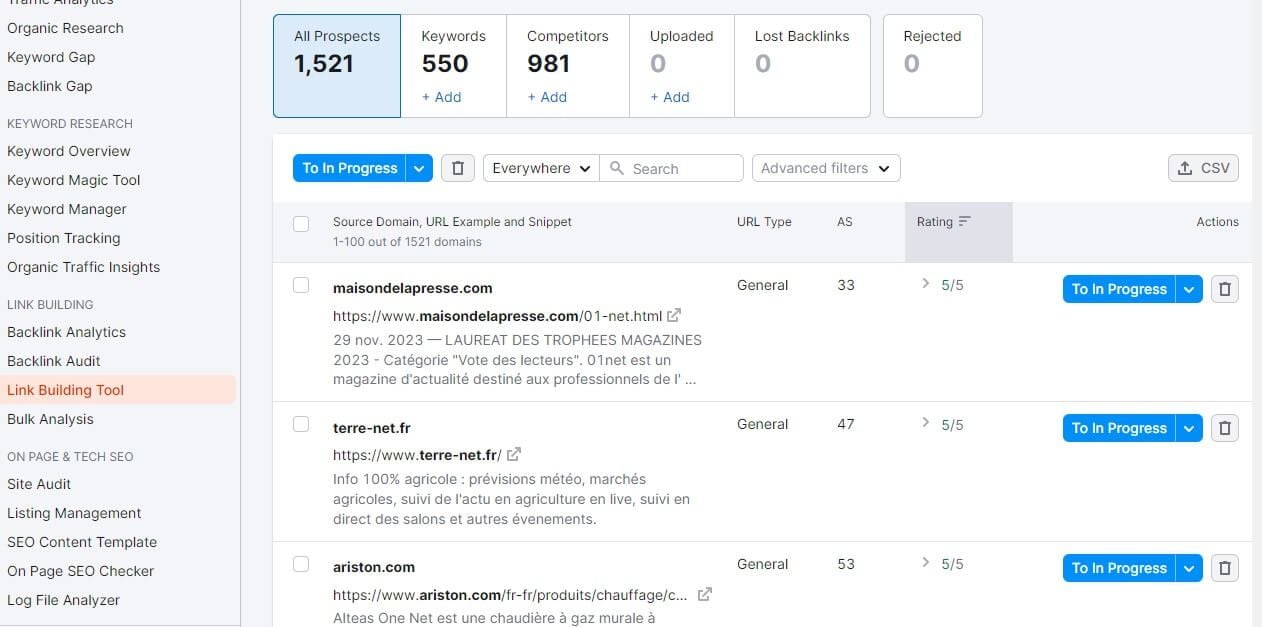
Now, the problem is that your website must be eligible for a backlink in the first place. No one will link to your site if it’s low in authority or poorly written and designed. Thus, you first need to ensure it’s properly optimized and with quality content.
You must convince other sites to link to you by being a quality source of information. Only then can you ask others for backlinks and get feedback that you expect. Semrush’s Link-Building tool can help you immensely by connecting you to thousands of website owners.
We’d also like to mention the Backlink Gap tool provided by Semrush. It’ll let you compare your domain to a competitor and see which sites link to it but not to your site. With this in mind, you can contact these sites and request a backlink to fill that “gap.”
Get Backlink Opportunities Semrush
If you put enough effort into your site and focus on all of the things we discuss here, chances are you won’t have issues getting backlinks.
You’ll see how just a few quality backlinks can dramatically increase Google ranking and skyrocket you to the very top of SERPs. Start your free trial on Semrush and try this feature risk-free!
9. Improve Internal Linking
Internal linking is important to rank a site on Google. During this article, you’ll find plenty of internal links and that’s no coincidence. Google still uses its PageRank algorithm that ranks web pages in SERPs according to the number of high-quality links that lead to it.
For this reason, it’s vital to improve your internal linking game, which can be done through several tools. Semrush, for example, offers keyword clustering and the Keyword Magic Tool that can be used to identify high-ranking keywords and use them in your internal linking.
Another point is to focus on your authoritative pages. Let’s say your site is about SEO tools. In this case, authoritative pages can be related to the free tools for SEO, the best SEO tools, a review of the #1 SEO tool according to your site, and so forth.
These pages will receive the majority of links, and in return, have them seen by Google as authoritative. When discussing internal linking, it’s good to take care of broken links. You can do that with the Site Audit function from Semrush or SE Ranking.
These tools will identify broken or even toxic links that you can fix in a minute. Internal linking can easily turn into spam if you overdo it. It’s vital to do it smartly and ensure your pages are connected properly through many internal links.
10. Increase Your Writing Quality
You can also rank higher on Google by providing exceptionally written articles and pages. Google values this as well but people often fail to realize what the word “quality” means in this case. For one, it means your articles should be easy to read.
We’d like to mention Semrush’s SEO Writing Assistant which allows you to evaluate each pager. Semrush will grade your article and give you the readability score, which you can improve through various means, such as shortening your sentences or anything else.
Readability, along with natural keyword implementation is key to success. Another aspect of quality is being concise. Your content should be written in a manner that allows each visitor to quickly get the desired information and be satisfied with it.
For example, you can focus on being a data source and pack your articles with tons of data that other sites can cite. This way, you can also attract quality backlinks and boost SEO immensely. Long-form content also seems to work well to rank a site on Google.
Through a well-written long article, you can better cover the topic and include more keywords, LSI keywords, and internal links.
11. Include Visuals
Apart from text, you should include visuals in your pages. Something that will attract the reader’s attention and reduce the bounce rate. Aesthetics plays a significant role and is one of the answers to the question of how to improve Google search ranking.
If you’re working on a comparison, it’s good to include a chart, graph, or table that will clarify which is a better choice. When including images, you can also protect them against copyright violation by including a logo if it’s an image made by you.
Attractive visuals make your website stand out from the crowd, and more importantly, they make the information easily digestible. It allows the user to visit the page, promptly find the needed information, and perhaps keep exploring the site for more data.
People use the term “skimmable” for a good reason. The average user spends less than a minute on the page, so he doesn’t have plenty of time to read through boring, endless, and dragged-out sentences.
Combined with concise and quality writing, properly done visuals can strike a big difference.
12. Track Your Google Ranking
Tracking your Google ranking is mandatory if you want to know your position. Our favorite rank tracker is Semrush but SE Ranking is also great.
Both services update your ranking data DAILY and they also include the option to inform you of rank changes through email.
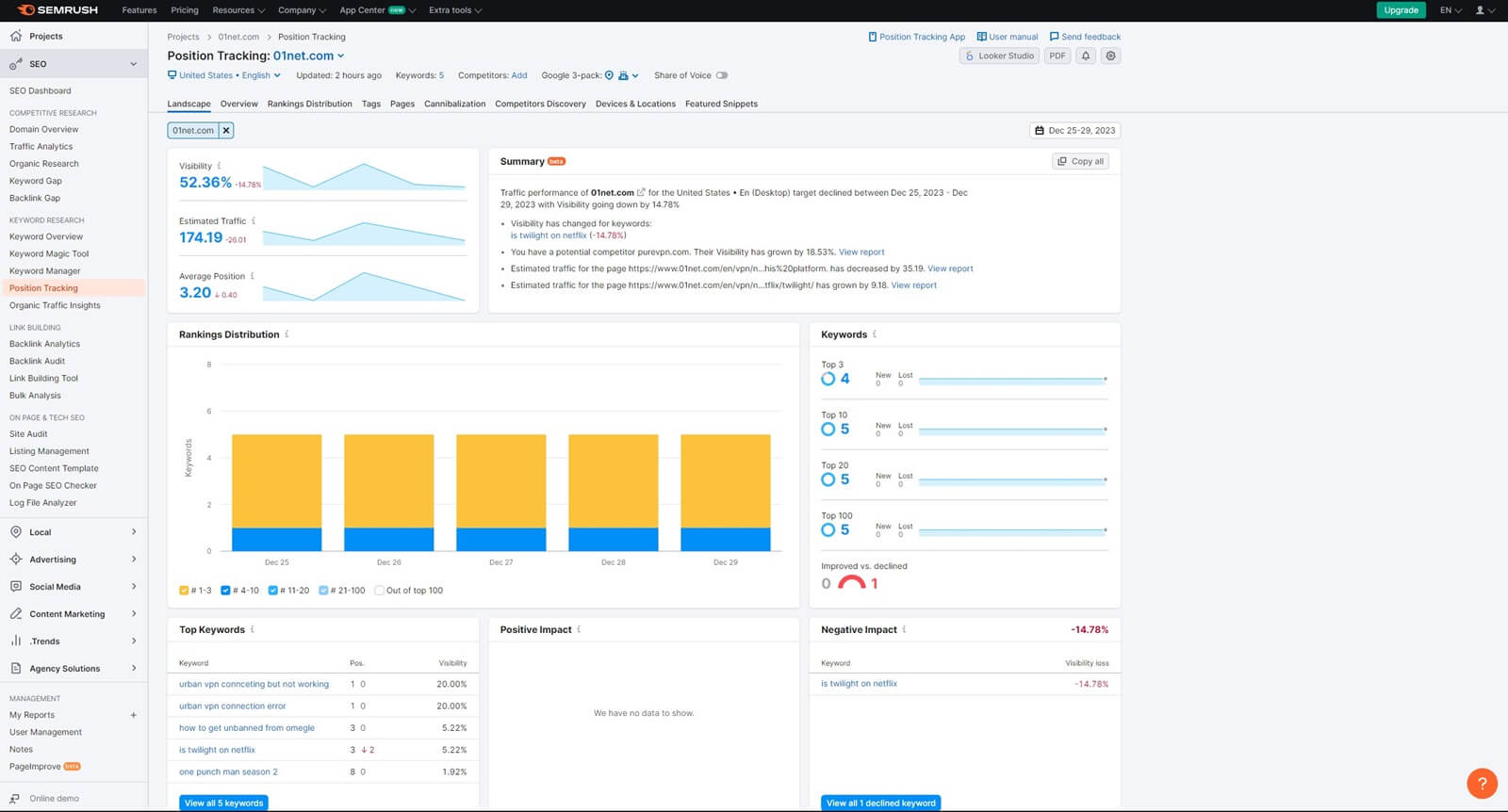
You’ll be notified whenever your site’s ranking is higher or lower. This way, you can be in touch with how your site performs during a particular period and include necessary changes. If the general trend is moving up the ranking, you’re doing a good job.
If you’re falling, it means you need additional improvements. Semrush will identify these issues through Site Audit, Keyword Research, Backlink Audit, and many other tools. Many also use Ahrefs to track ranking, which is another accurate tool.
Use Semrush to Track Google Rankings
However, with its weekly updates, it’s not the best option unless you pay more for daily updates and spend your hard-earned money.
Conclusion: How to Improve Google Ranking
With everything said, you should know how to rank higher on Google. This is a complex topic and the process of improving your Google ranking is long and filled with obstacles. However, when you apply all our bits of advice and do it right, it’s satisfying.
Once you get the gist of it, you’ll keep improving and appear more often in SERPs on the first Google Search results page. We can’t say which tactic is the best to rank a site on Google. They’re all important and should be incorporated simultaneously.
Getting quality backlinks is likely among the top 3 conditions to rank higher on Google. But this means producing quality content, which goes in line with proper SEO optimization, keyword distribution, internal linking, and everything else we discussed in the article.
All of this can be achieved through the use of an SEO tool of your choice. Semrush is our #1 option but if you opt for something cheaper, consider trying SE Ranking for free for 14 days. We’re confident you’ll be pleased with their nifty SEO functions.